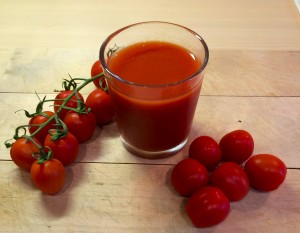If I could have my time again, I would have started caring for my skin at 12 years old the way I care for it now – with one exception: I have always loved tomatoes.
Tinned tomatoes, cherry tomatoes, ketchup, tomato juice – all of them.
And I believe this has helped me to defy the odds and maintain a pretty good complexion – and the science is there to back me up.
The humble tomato is the fruit of the “Solanum Lycopersicum” or tomato plant. It originated in the South American Andes, but was brought to Europe from Mexico in the mid-1500s, and is now widely grown and eaten around the world.
A tomato is botanically a fruit but considered a vegetable for cooking purposes. They are consumed raw as crudités or in salads, or as an ingredient in many dishes, sauces, drinks – and cocktails such as the Bloody Mary, the traditional “hair of the dog” after a big night out. And here’s why.
Tomatoes are rich in vitamins A and C, and are a good source of calcium, phosphorous, potassium and sodium. They detoxify the body, purify the blood, boost digestion and reduce constipation. And, although they are considered an acidic food, they alkalise the blood and are useful in treating acidic conditions such as gout.
But even better, tomatoes are rich in antioxidants, such as the carotene lycopene, which is one of nature’s most powerful at neutralising the damaging free radicals that can cause cancer.
Some studies claim that, especially in cooked tomatoes, lycopene could help prevent a range of cancers, manage neurodegenerative diseases, and improve the skin’s ability to protect itself against harmful UV rays and sunburn – and help keep it looking young.
For all these reasons, lycopene is now being incorporated as an ingredient in multivitamins.
The only down side I have discovered is that tomatoes can interfere with calcium absorption and should be avoided by sufferers of arthritis.
Otherwise, four tomatoes a day, or a glass of tomato juice, could be the answer to a long and healthy life. Anyone for a Virgin Mary?


Comments are closed.